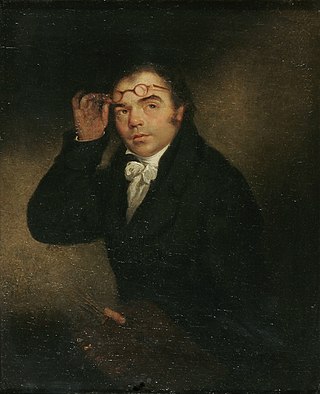
John Crome, once known as Old Crome to distinguish him from his artist son John Berney Crome, was an English landscape painter of the Romantic era, one of the principal artists and founding members of the Norwich School of painters. He lived in the English city of Norwich for all his life. Most of his works are of Norfolk landscapes.
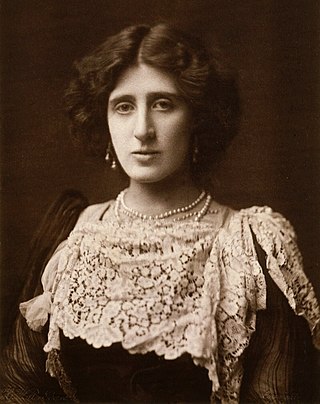
Lady Ottoline Violet Anne Morrell was an English aristocrat and society hostess. Her patronage was influential in artistic and intellectual circles, where she befriended writers including Aldous Huxley, Siegfried Sassoon, T. S. Eliot and D. H. Lawrence, and artists including Mark Gertler, Dora Carrington and Gilbert Spencer.

The Holy Lance, also known as the Lance of Longinus, the Spear of Destiny, or the Holy Spear, is alleged to be the lance that pierced the side of Jesus as he hung on the cross during his crucifixion. As with other instruments of the Passion, the lance is only briefly mentioned in the Christian Bible, but later became the subject of extrabiblical traditions in the medieval church. Relics purported to be the lance began to appear as early as the 6th century, originally in Jerusalem. By the Late Middle Ages, relics identified as the spearhead of the Holy Lance had been described throughout Europe. Several of these artifacts are still preserved to this day.

Thomas Bewick was an English wood-engraver and natural history author. Early in his career he took on all kinds of work such as engraving cutlery, making the wood blocks for advertisements, and illustrating children's books. He gradually turned to illustrating, writing and publishing his own books, gaining an adult audience for the fine illustrations in A History of Quadrupeds.
The Norwich School of painters was the first provincial art movement established in Britain, active in the early 19th century. Artists of the school were inspired by the natural environment of the Norfolk landscape and owed some influence to the work of landscape painters of the Dutch Golden Age such as Hobbema and Ruisdael.

John William Draper was an English scientist, philosopher, physician, chemist, historian and photographer. He is credited with pioneering portrait photography (1839–40) and producing the first detailed photograph of the moon in 1840. He was also the first president of the American Chemical Society (1876–77) and a founder of the New York University School of Medicine.

Alice Dixon Le Plongeon (1851–1910) was an English photographer, amateur archeologist, traveller, and author. She was one of the first people to excavate and study the ancient Maya sites of Chichen Itza and Uxmal.
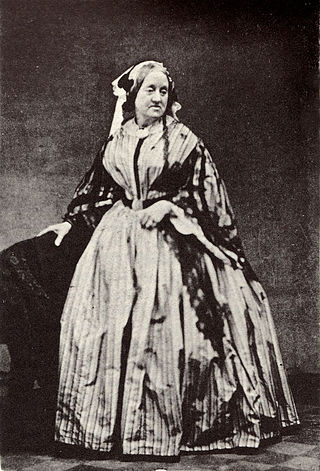
Anna Atkins was an English botanist and photographer. She is often considered the first person to publish a book illustrated with photographic images. Some sources say that she was the first woman to create a photograph.

Piprahwa is a village near Siddharthnagar city in Siddharthnagar district of the Indian state of Uttar Pradesh. Kalanamak rice, a scented and spicy variety of rice is grown in this area. It lies in the heart of the historical Buddha's homeland and is 9 miles from the world heritage site of Lumbini that is believed to be the place of Gautama Buddha's birth.
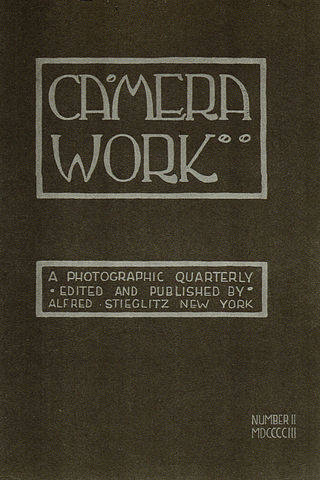
Camera Work was a quarterly photographic journal published by Alfred Stieglitz from 1903 to 1917. It presented high-quality photogravures by some of the most important photographers in the world, with the goal to establish photography as a fine art. It has been called "consummately intellectual", "by far the most beautiful of all photographic magazines", and "a portrait of an age [in which] the artistic sensibility of the nineteenth century was transformed into the artistic awareness of the present day."

Wych Street was in London where King, Melbourne and Australia Houses now stand on Aldwych. It ran west from the church of St Clement Danes on the Strand to meet the southern end of Drury Lane. It was demolished by the London County Council in around 1901, as part of redevelopment bisected by new street Aldwych, the east of which mimics its course, in a curved way so taking up land buildings stood on, and these works created Kingsway.
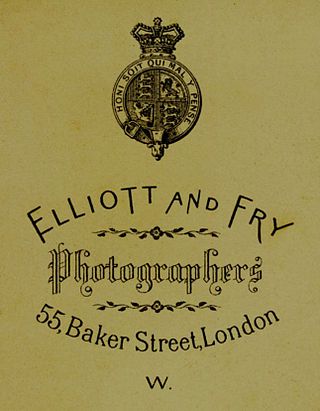
Elliott & Fry was a Victorian photography studio founded in 1863 by Joseph John Elliott and Clarence Edmund Fry. For a century, the firm's core business was taking and publishing photographs of the Victorian public and social, artistic, scientific and political luminaries. In the 1880s, the company operated three studios and four large storage facilities for negatives, with a printing works at Barnet.
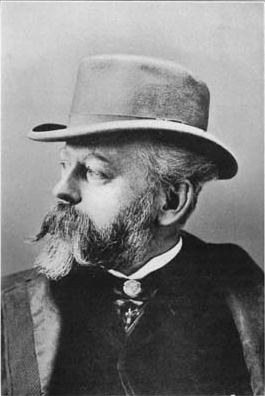
Henry Sandham was a Canadian painter and illustrator. He was the brother of author and numismatist Alfred Sandham.

Sarah Angelina "Angie" Acland was an English amateur photographer, known for her portraiture and as a pioneer of colour photography. She was credited by her contemporaries with inaugurating colour photography "as a process for the travelling amateur", by virtue of the photographs she took during two visits to Gibraltar in 1903 and 1904.

Swan House is a Grade II* listed house at 17 Chelsea Embankment on the north bank of the River Thames in Chelsea, central London, England. Built in 1876 by the architect Richard Norman Shaw, architecturally it is relevant both to the Queen Anne Revival and to the Arts and Crafts movement. It was built by Shaw for the artistic patrons Wickham and Elizabeth Flower. Jones and Woodward, in their Guide to the Architecture of London, consider Swan House to be the "finest Queen Anne Revival domestic building in London."
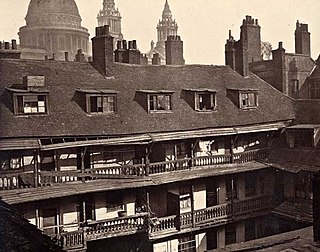
The Society for Photographing Relics of Old London was founded in 1875 in London, England, initially with the purpose of recording the Oxford Arms, a traditional galleried public house on Warwick Lane that was to be demolished as part of the redevelopment of the Old Bailey.

Henry Charles Innes Fripp (1867-1963) was an English painter, genre artist and illustrator, stained glass maker, designer, and teacher. Many of his illustrations appear under the name Innes Fripp.

Cleopatra's Needle in London is one of a pair of obelisks, together named Cleopatra's Needles, that were moved from the ruins of the Caesareum of Alexandria, in Egypt, in the 19th century. Inscribed by Thutmose III and later Ramesses II of the Egyptian New Kingdom, the obelisk was moved in 12 BC to Alexandria, where it remained for over 1,800 years.

George Perry Abraham FRPS was a British photographer, postcard publisher, and mountaineer.


















